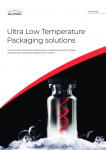PPD's Q1 profit drops on charges
was hit with impairment charges and increased research and
development (R&D) costs.
The contract research organisation (CRO) reported a pre-tax profit of $57.3m for the quarter, as opposed to the $64.6m generated in the comparable period last year.
Aside from the profit dip, PPD recorded an operating income of $67.9m, up from the $60m generated in the comparable last year period, and revenue of $396.2m for the first quarter - an increase of 19.3 per cent over revenue of $332.3m for the first quarter of 2007.
In the company's Development segment, revenue was $347.8m, an increase of 15.9 per cent over the same period in 2007, but income from operations was $58.3m, compared to $61.6m.
Meanwhile, the Discovery sciences segment saw revenue jump to $19.7m from the $4.5m recorded in the same 2007 period, largely on the back of a a $15.0m milestone payment following the US Food and Drug Administration's (FDA's) acceptance of Takeda Pharmaceutical's new drug application (NDA) for alogliptin, a DPP-4 inhibitor for the treatment of type II diabetes.
However, this was partially offset by an increase in R&D expense.
Income from operations was $9.6m, compared to a loss from operations of $1.5m for the first quarter of 2007.
The main impact on PPD's first quarter pre-tax profit was from a series of investment impairment charges, totalling $16.3m.
For example, in March Accentia Biopharmaceuticals announced that its chronic sinusitis drug SinuNase failed to meet its goal in a Phase III clinical trial and as such PPD had to write-off $1.6m of remaining unamortized value of its royalty interest in the drug and $6.5m of equity investment in Accentia.
In addition, the company also saw its R&D bill increase to $4.3m from $1.9m in the same period last year as it continues to foot the bill for its statin compound for dyslipidemia.
The firm's decision to in-license the investigational compound is proving to be a drag on its bottom line as PPD continues to seek a development partner for the drug.
The CRO bought the statin from India's Ranbaxy early in 2007 in a deal worth up to $44m and the company's R&D spending has shot up ever since.
The compound showed positive results in a first-in-human study and based on these results, PPD started a first-in-patient study as well as a Phase II proof-of-concept study.
The company has been " aggressively seeking a commercial partner " for the statin in order to help shoulder the burden that the added R&D expenditure is having on the business and has been in "active discussions with a couple of potential licensees in regards to the compound" although as yet, no partner has been found.
PPD's in-licensing move is highly unusual for a CRO, whose primary business model is providing drug development assistance on a fee-for-service basis.
However, the new compound was taken under the wing of PPD's small but growing Compound Partnering division, which currently has four compounds in development with three partners.
Commenting on the performance of the compound partnering unit, company CEO Fred Eshelman said, " Although we were disappointed with the results of the SinuNase Phase III trial, we are pleased with the FDA's acceptance of the NDA for alogliptin and the overall progress of our compound partnering portfolio ."




















